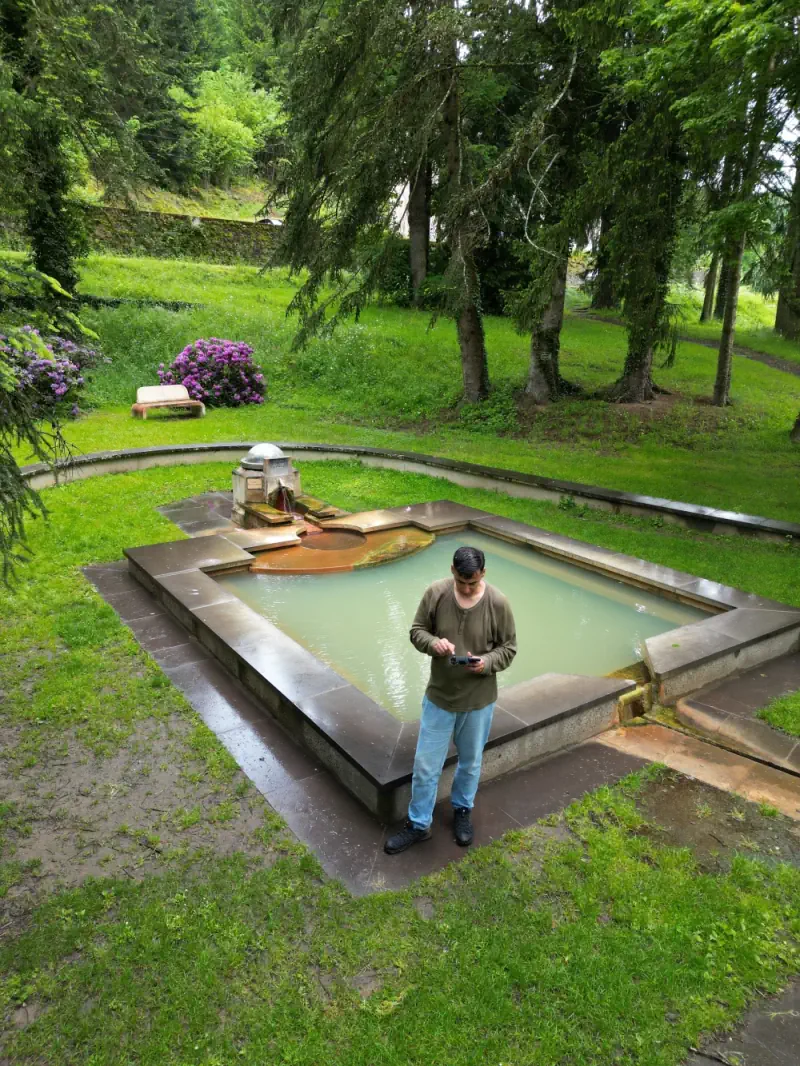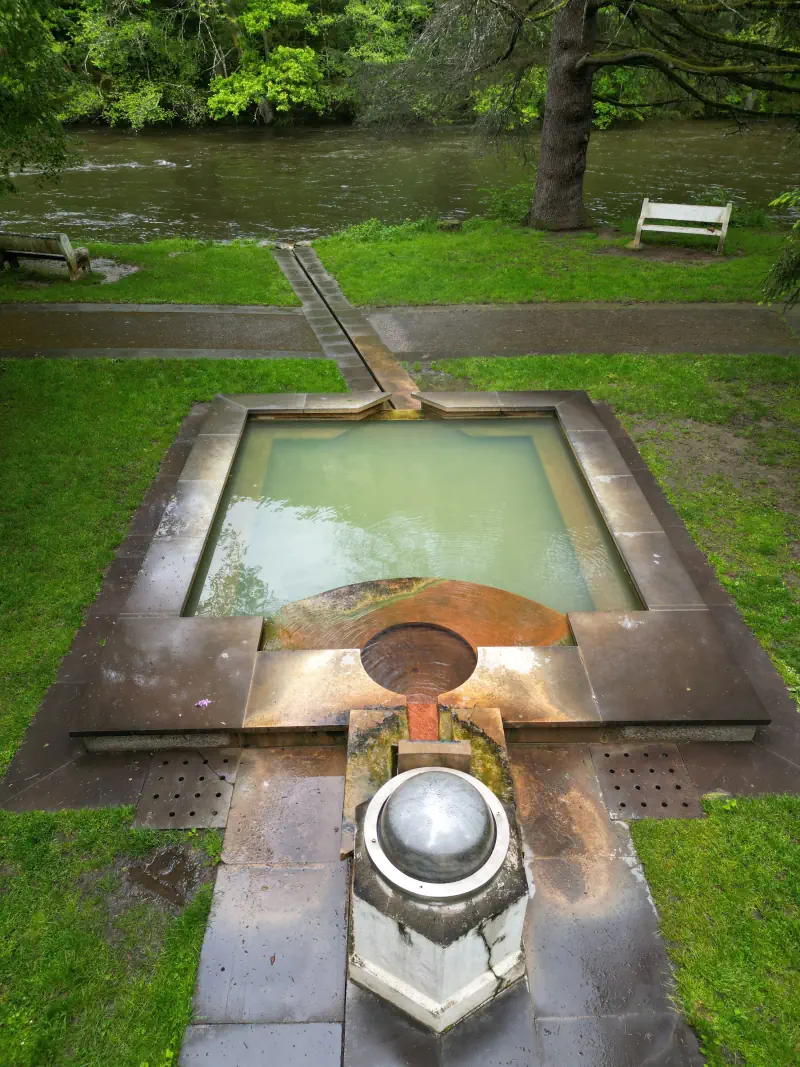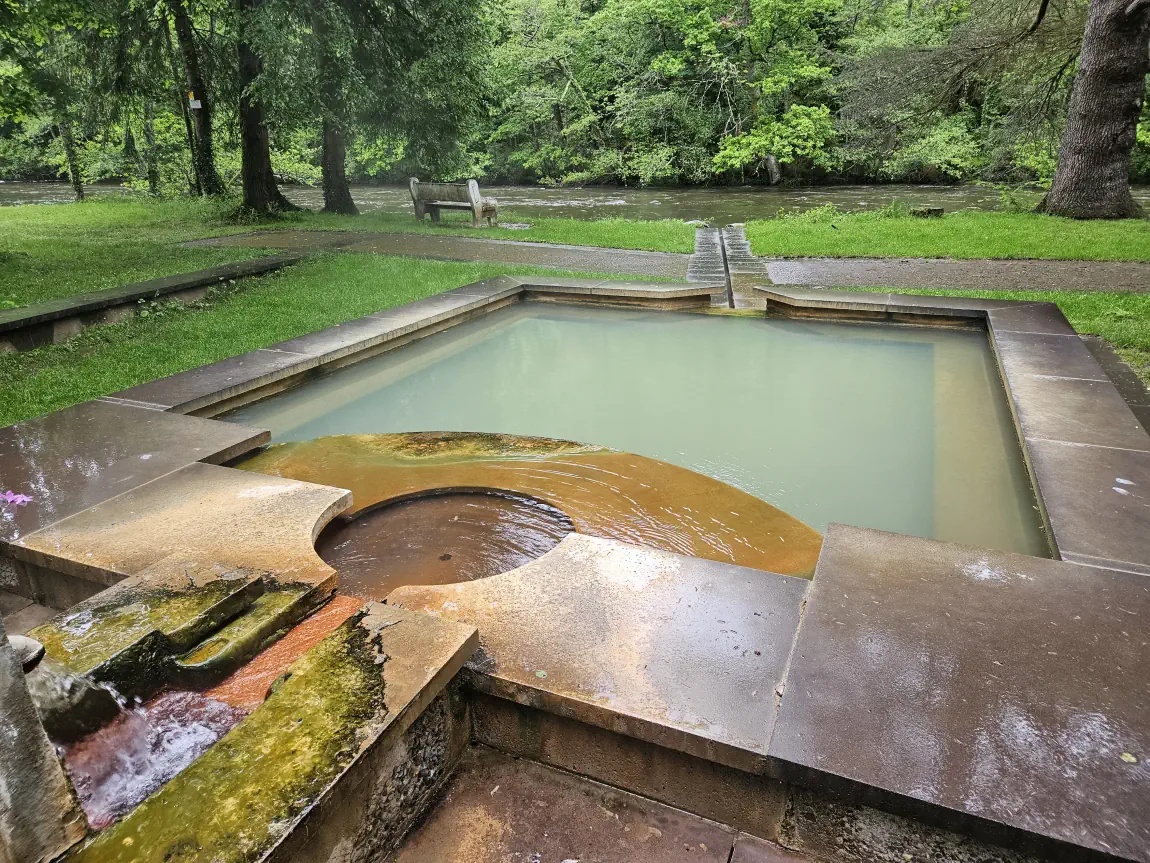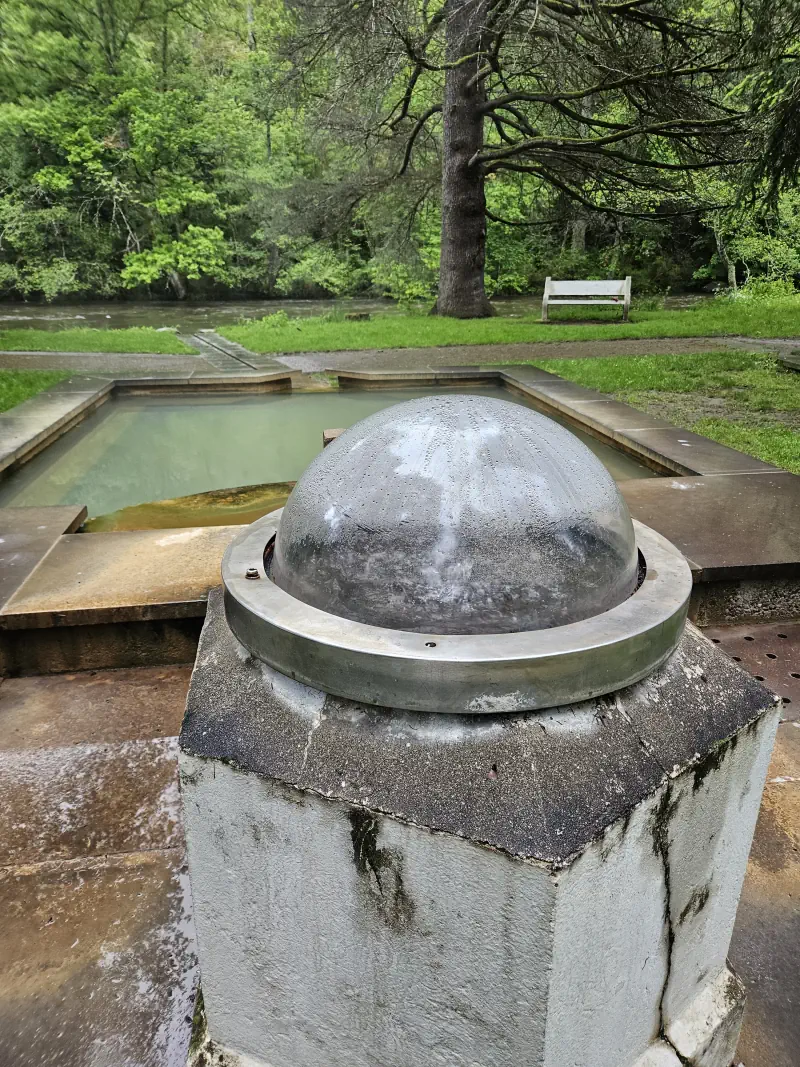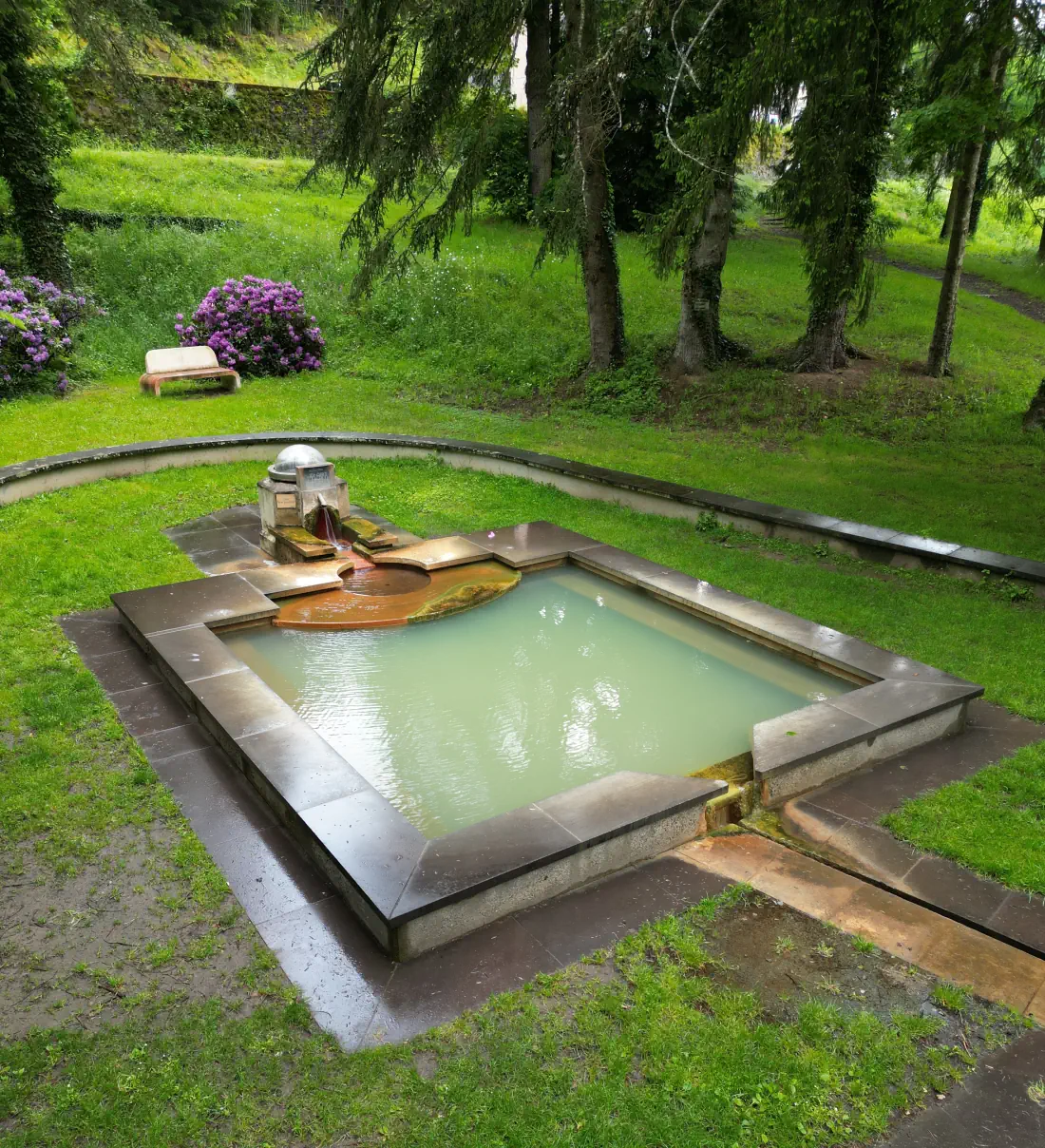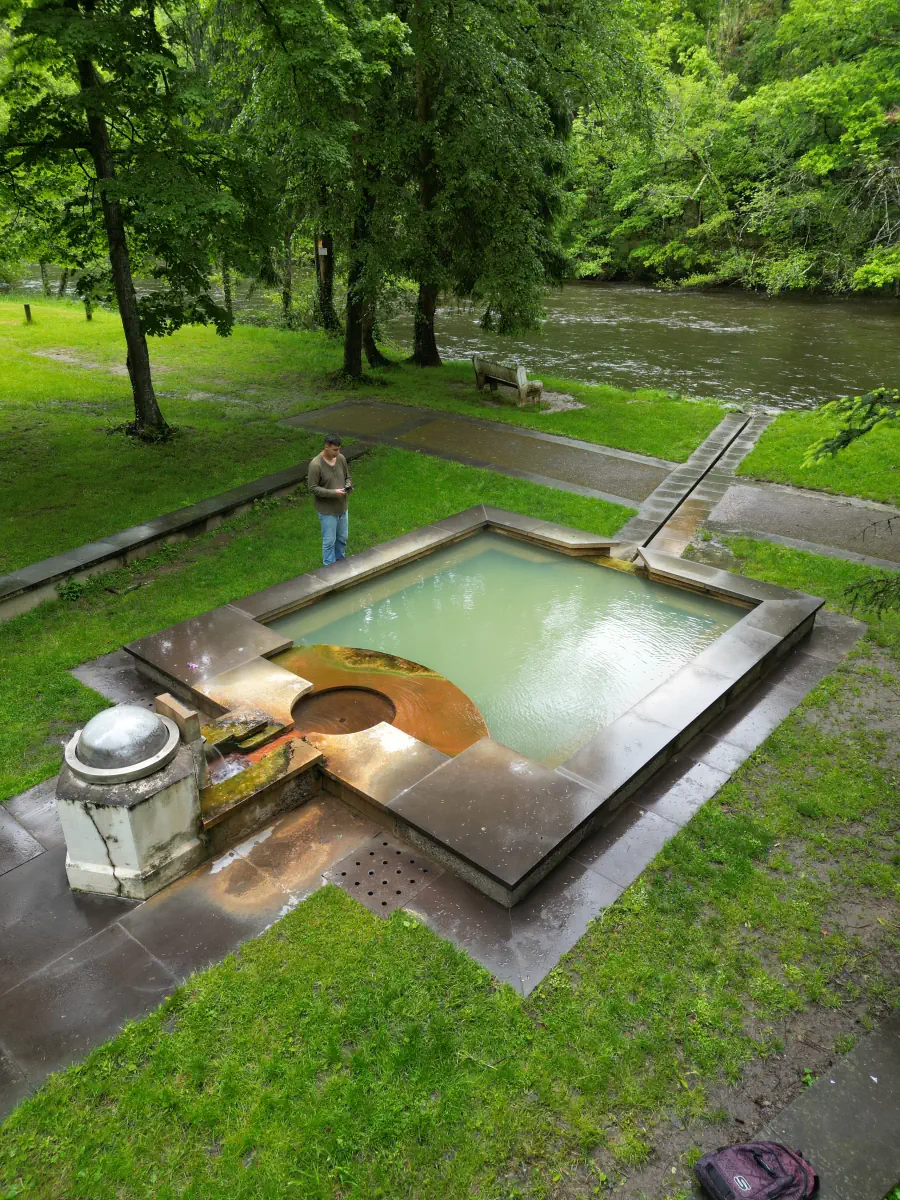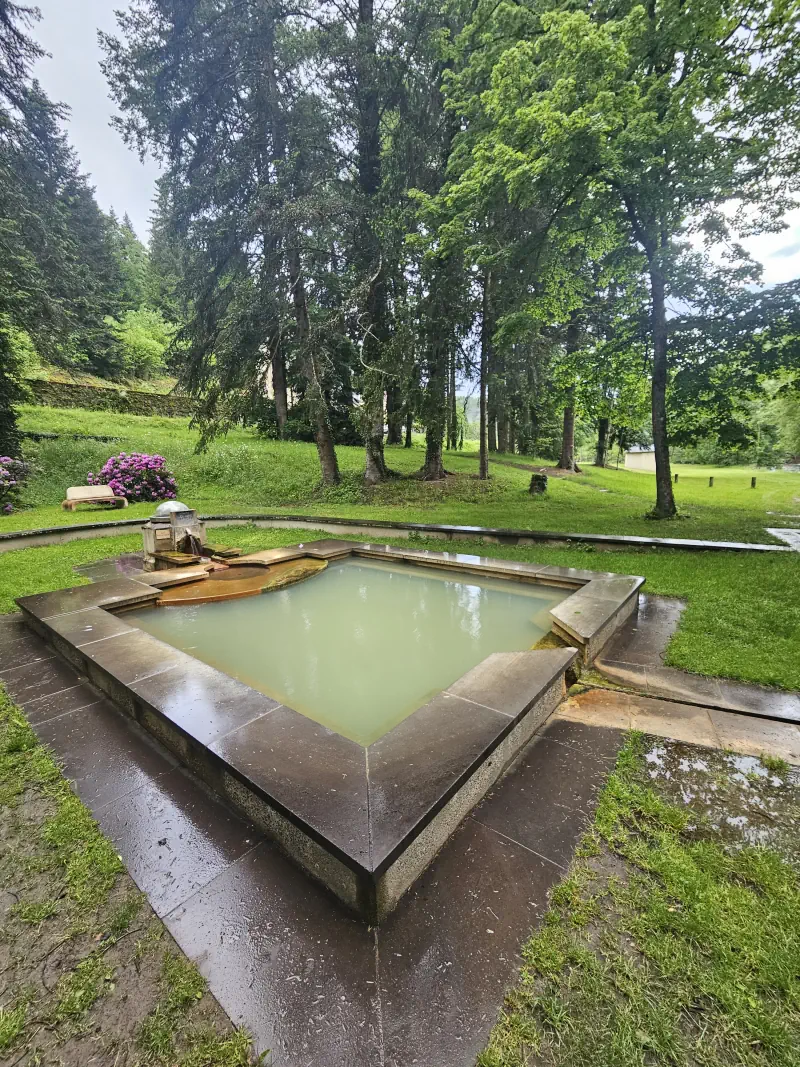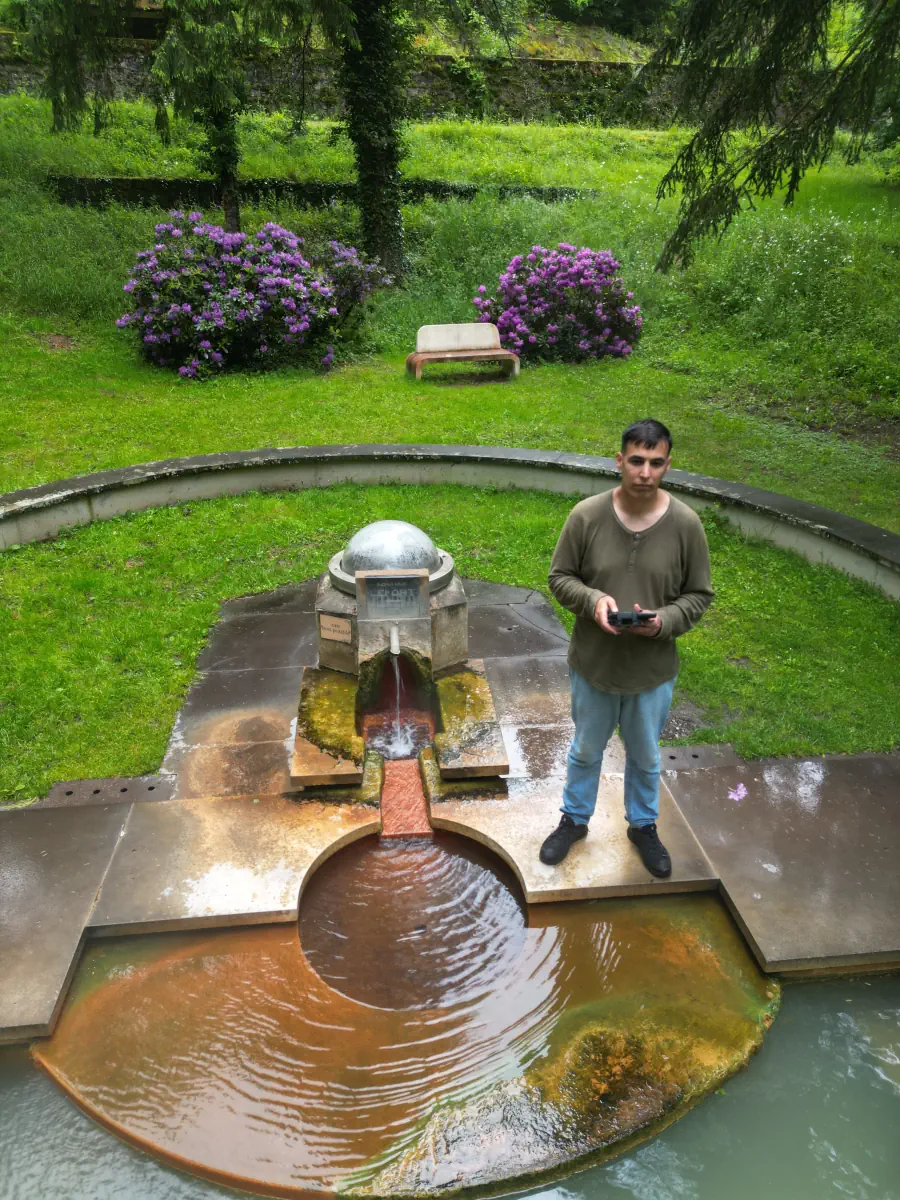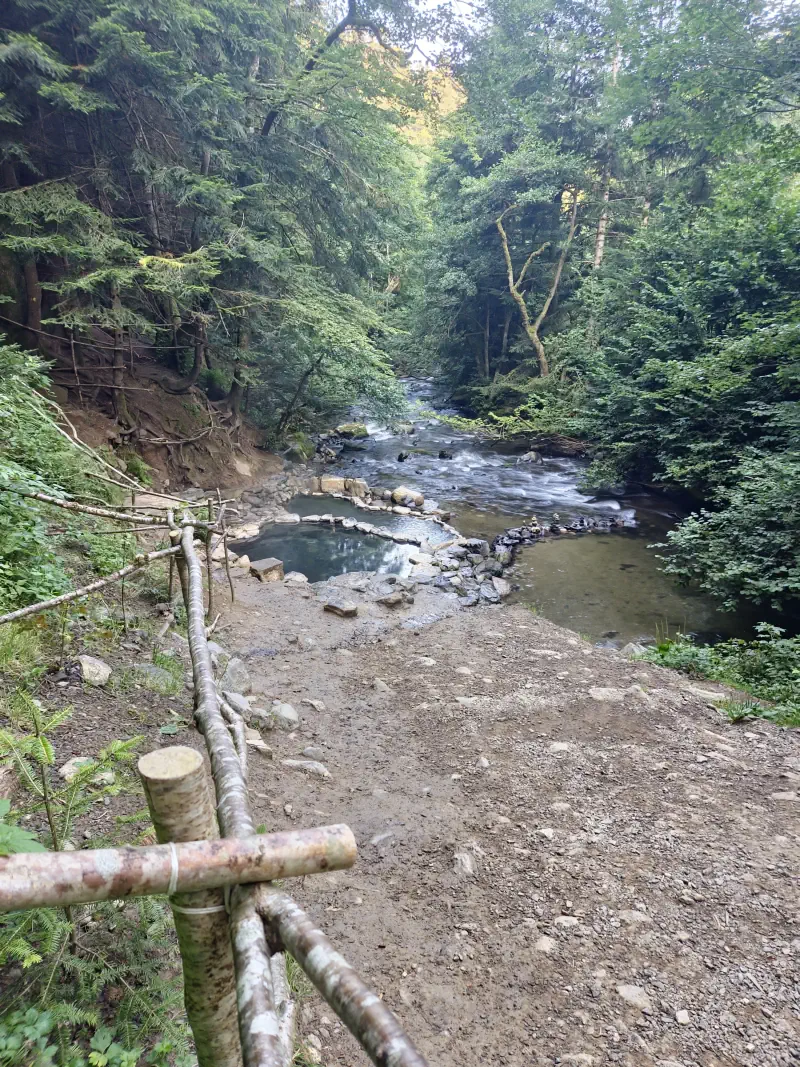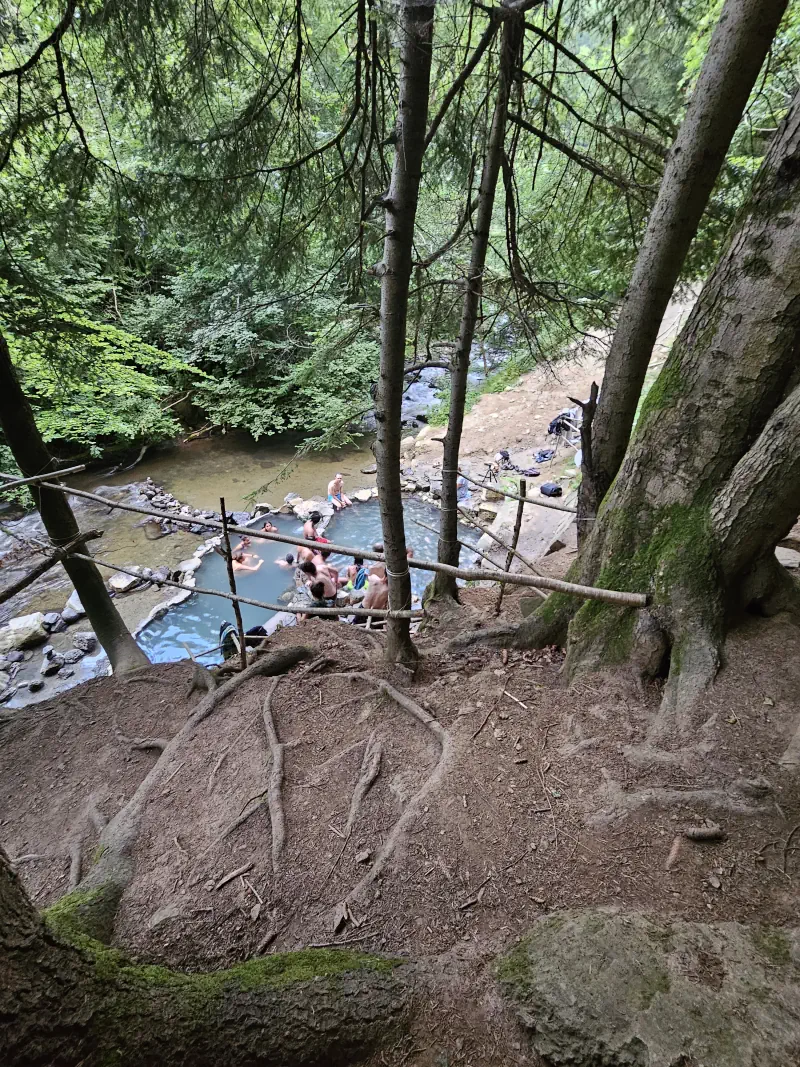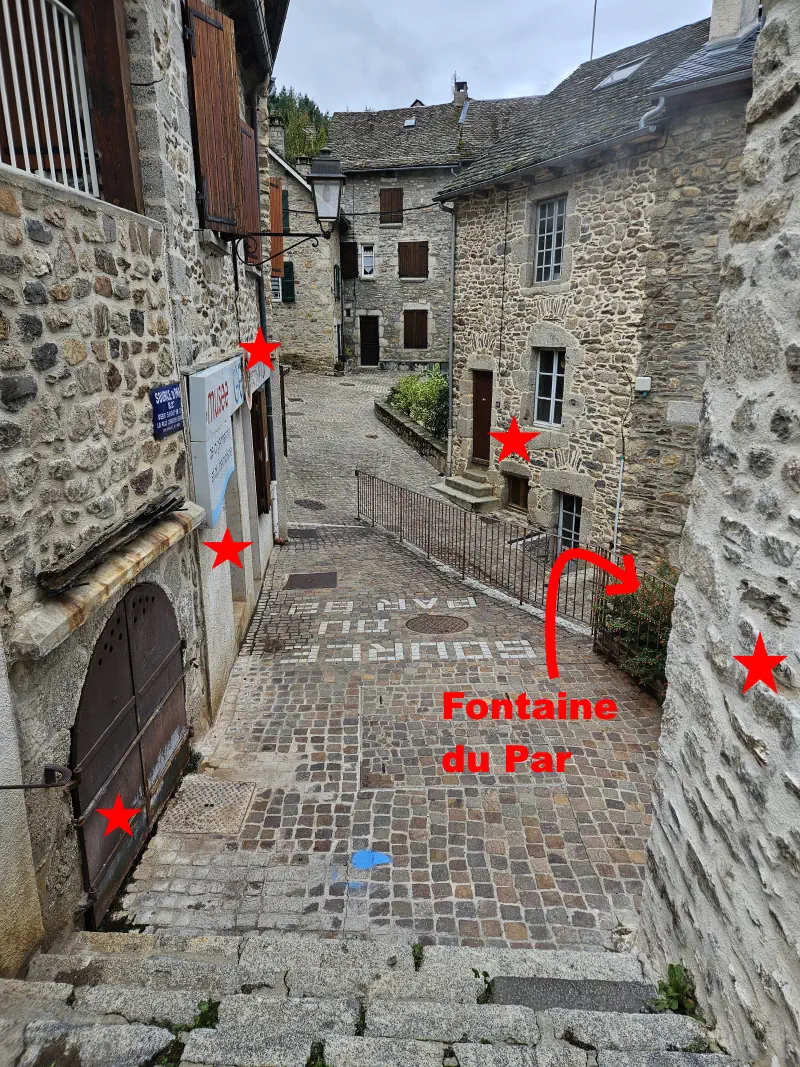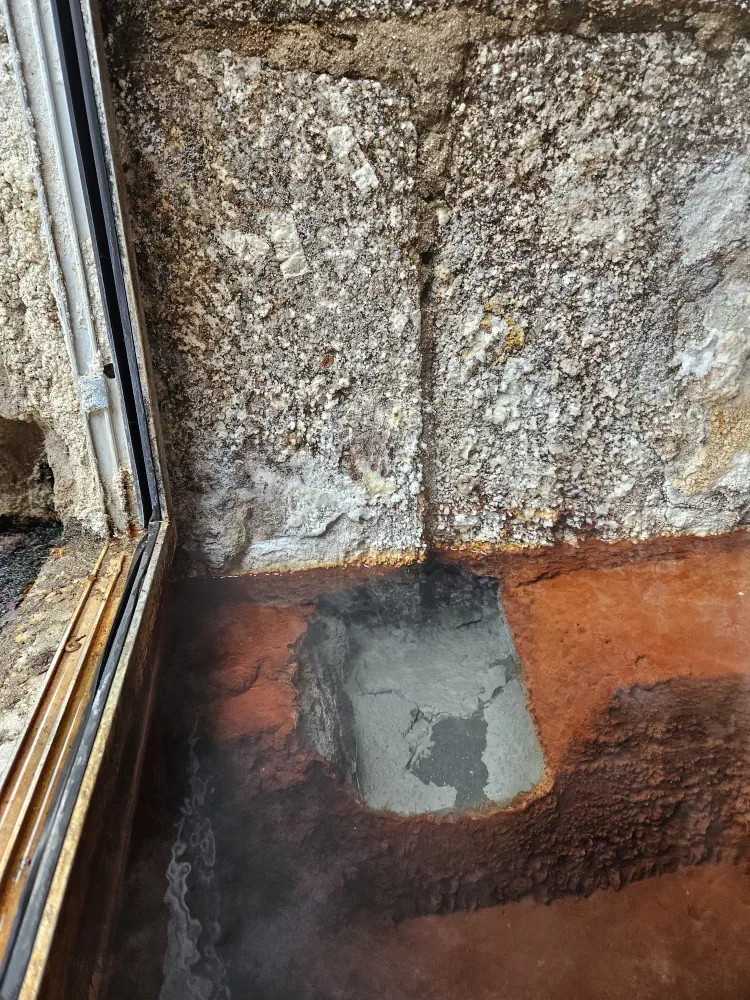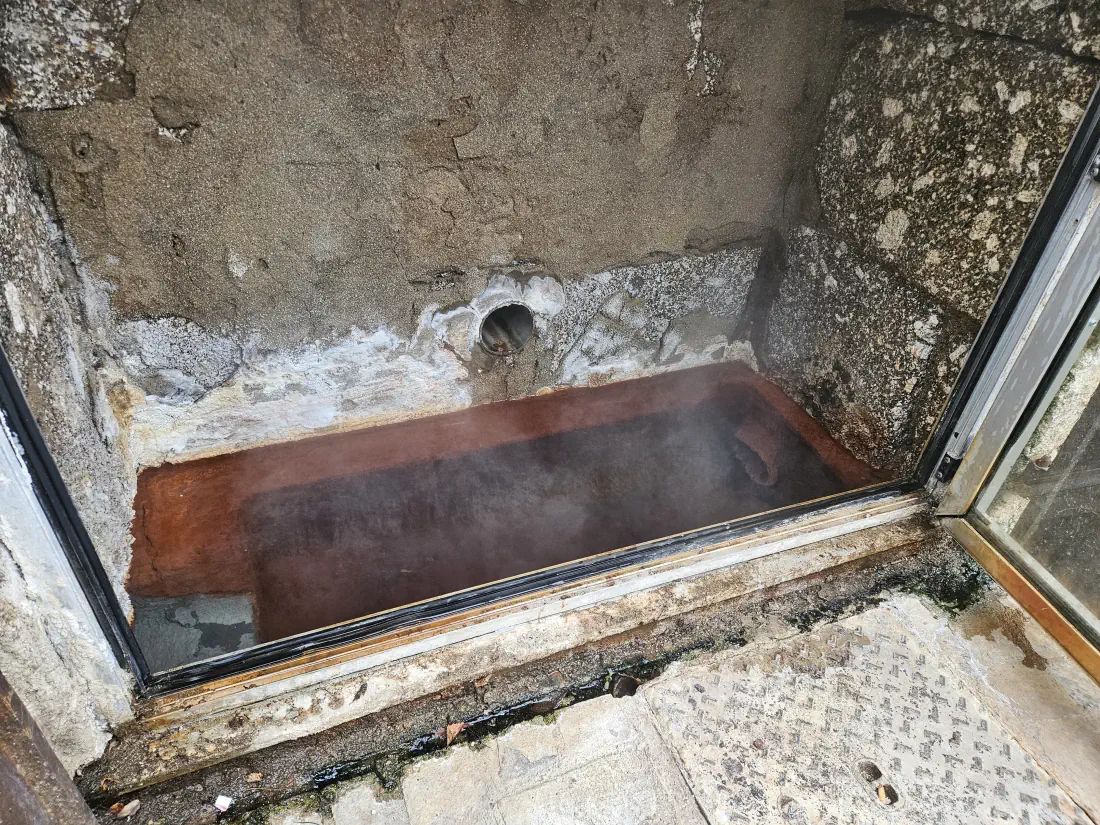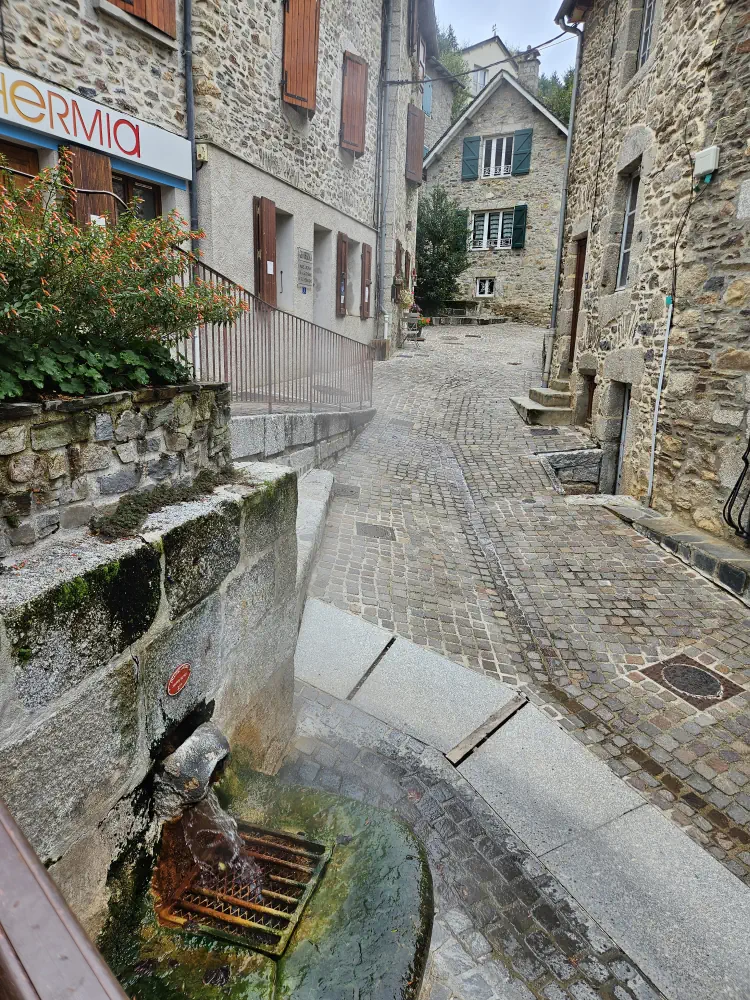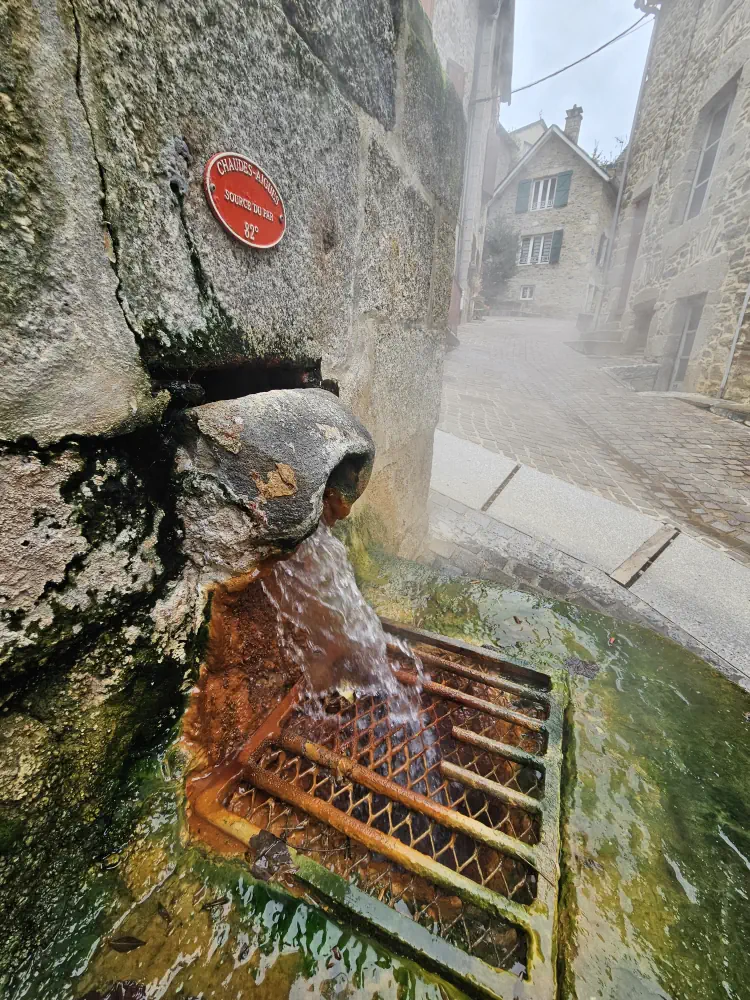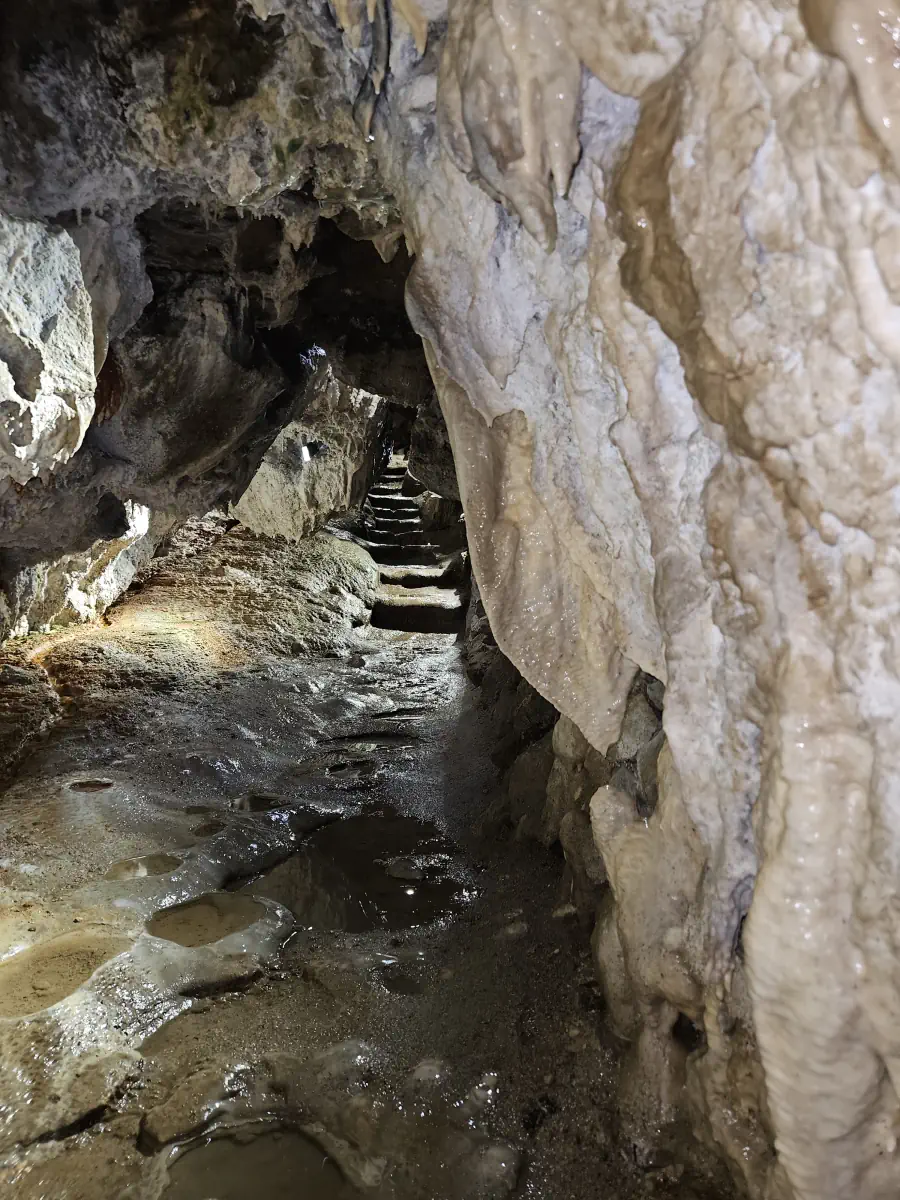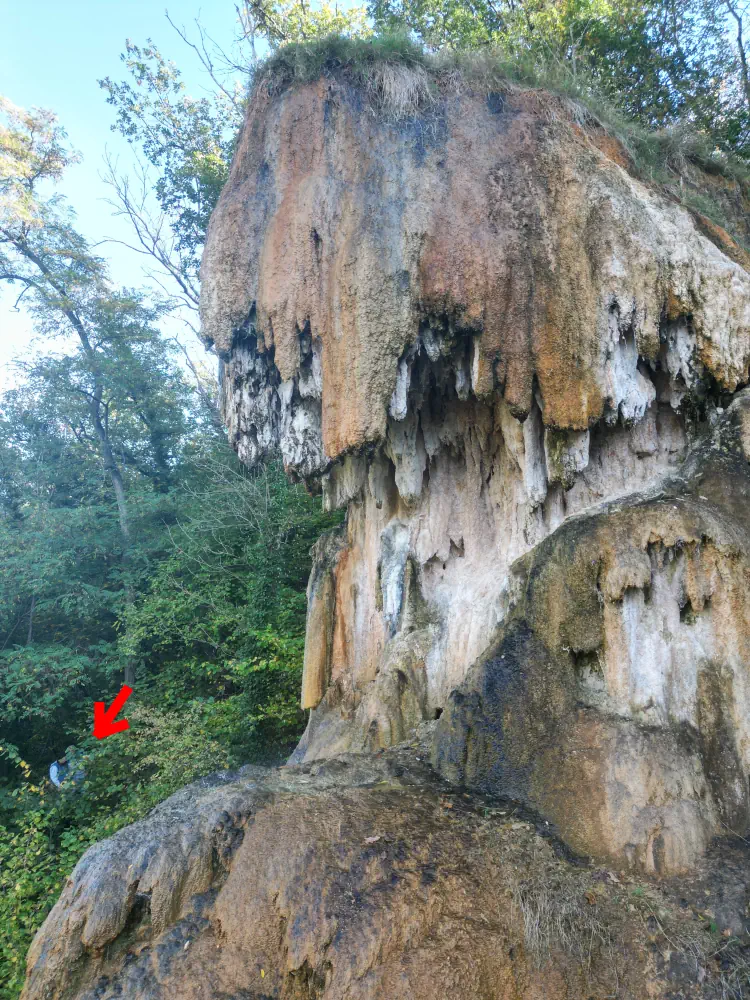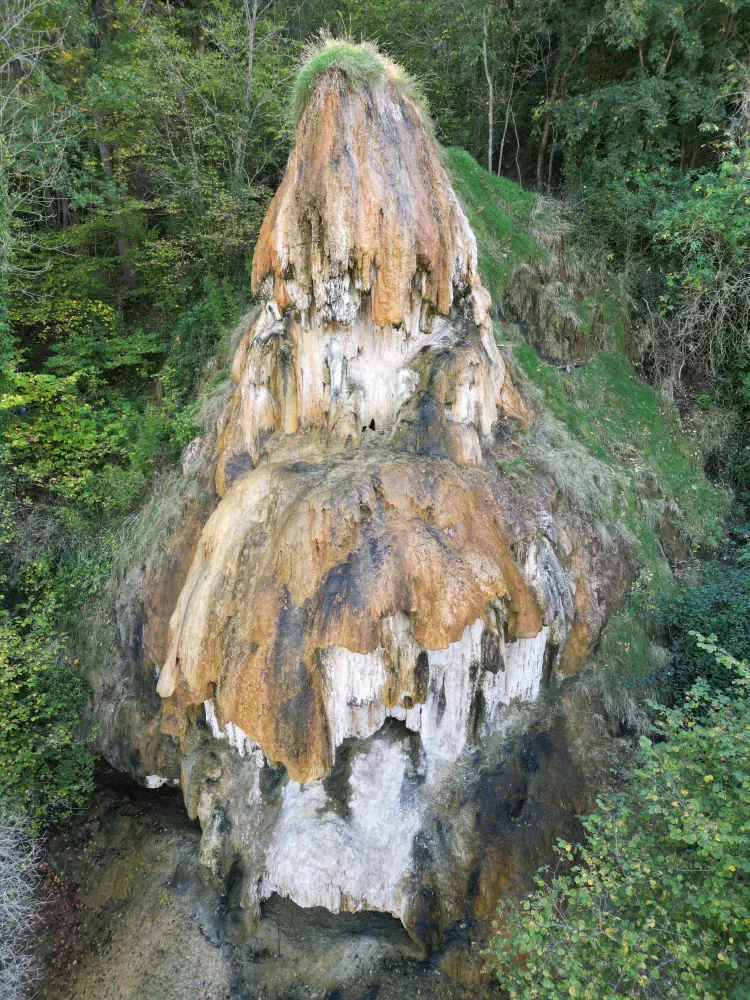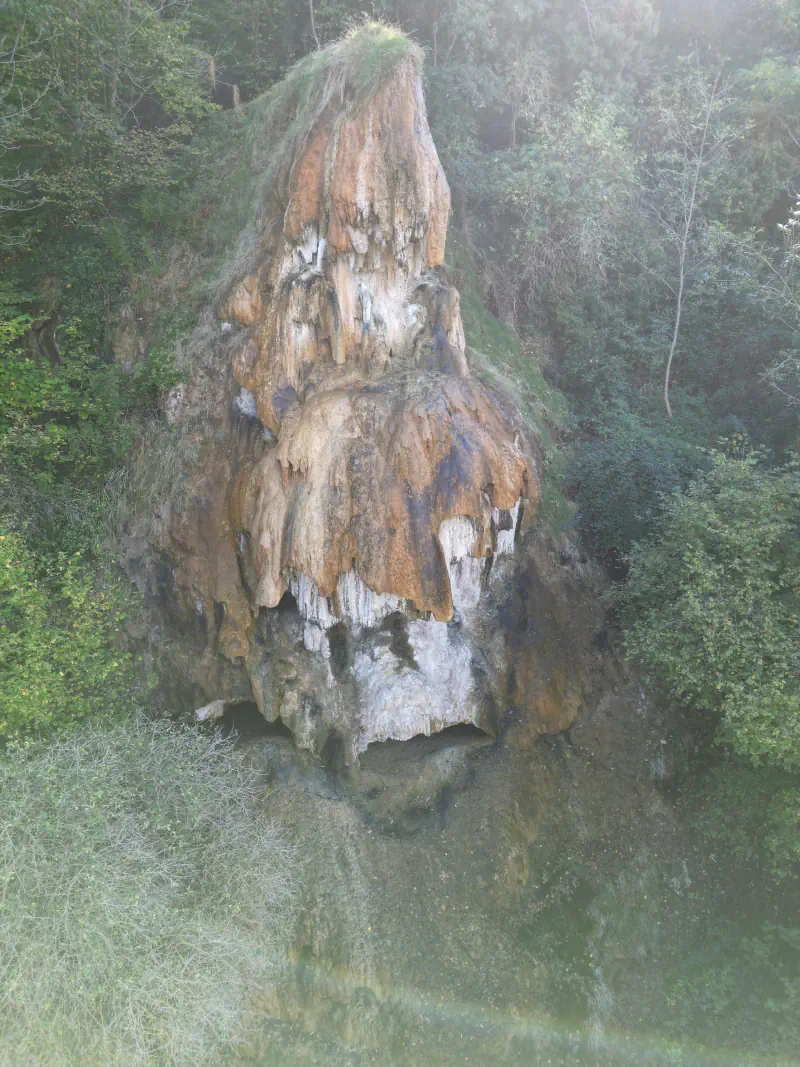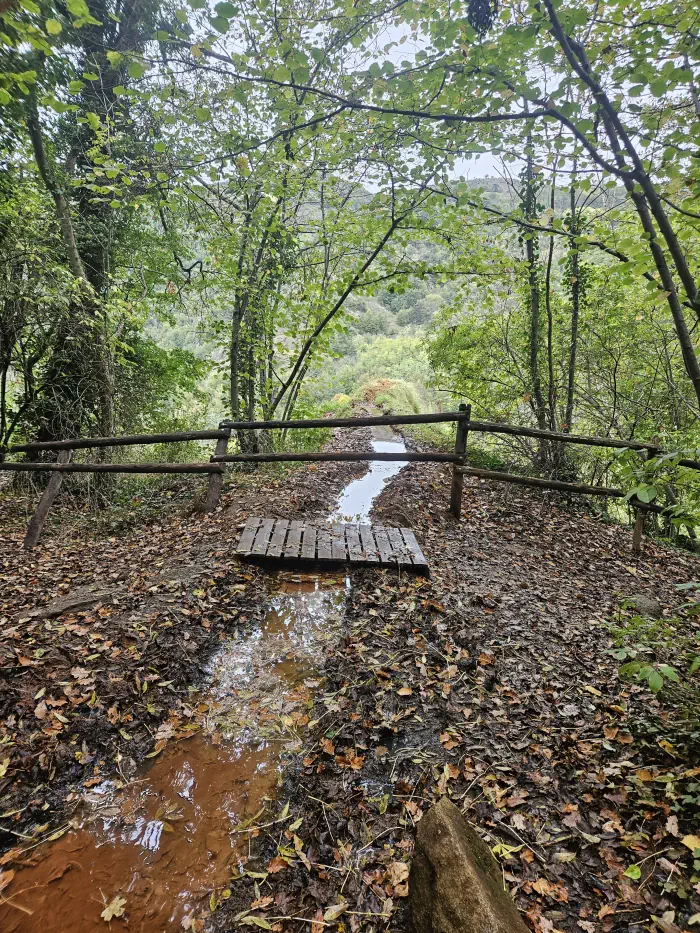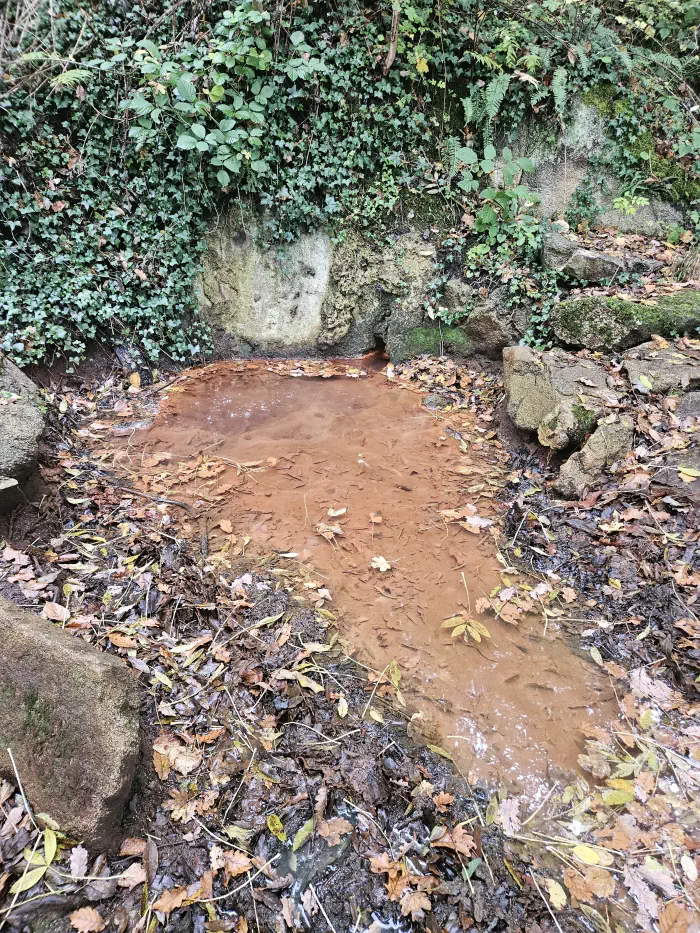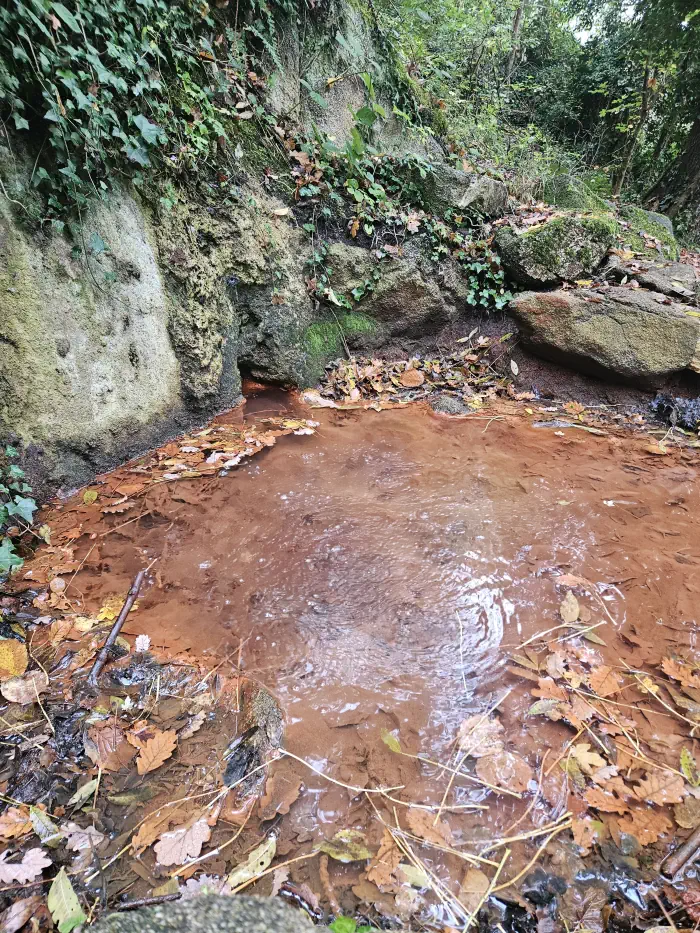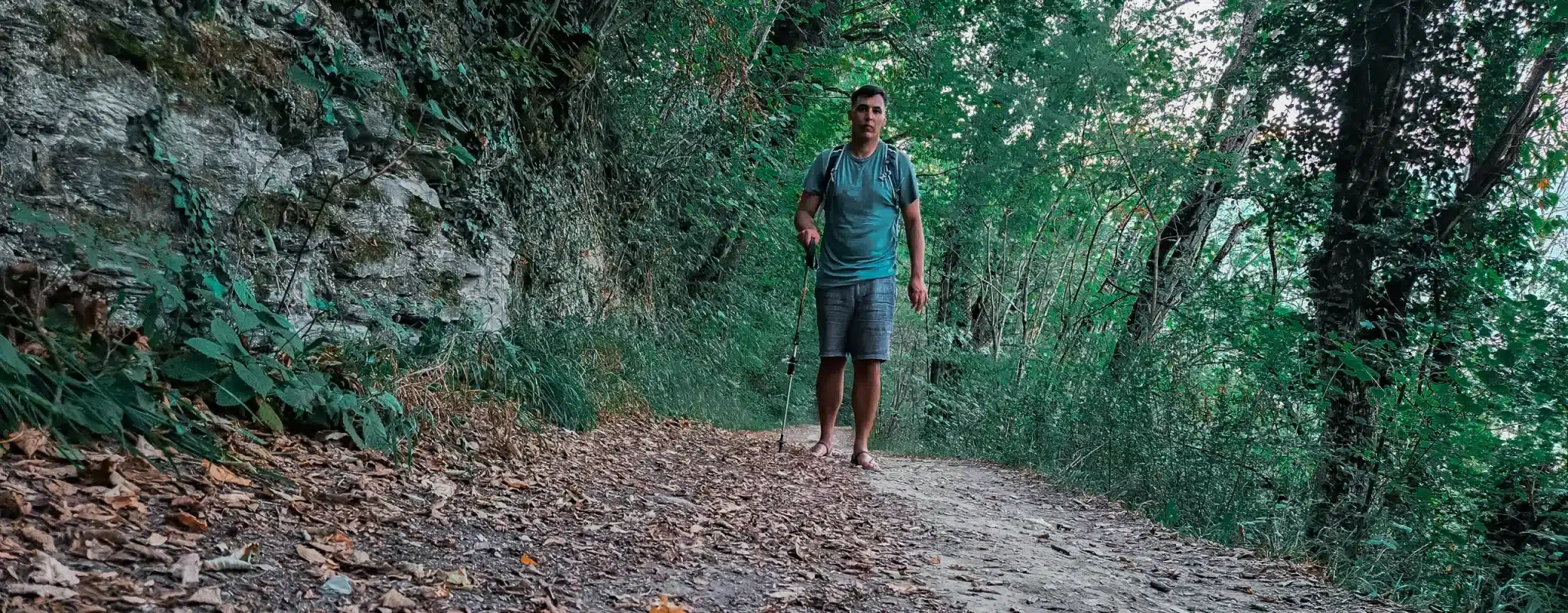Visit the Auvergne: Hot Springs and Healing Fountains
- Nature Source Chaude
- Published on
- Updated on 27 August 2025
The Auvergne region is characterised by high plateaus, deep valleys and volcanoes, all of which have been sculpted by fire, water and earth.
It is only when you explore the region that you realise this. Much of the area is part of the Massif Central, home to France’s tallest volcano and one of the world’s largest volcanic complexes.
The region’s volcanic soil naturally makes the Auvergne, along with the Pyrenees, home to some of the most diverse mineral waters in France.
All of these mineral springs are renowned for their therapeutic properties, regardless of their temperature. Consequently, people have been visiting them since ancient times, if not earlier. Most of them were developed towards the end of the 19th century.
Table of Contents:
Map of hot springs and mineral waters in the Auvergne region
There are only a few places in Auvergne where you can soak in thermal water for free. But the water must be warm! These places are marked on the map.
However, the Lefort spring is the only one that is free to use. You can dip your feet — or even more — in the warm thermal water. You can find out more about this place in this article.
You will also find mineral springs on the map that gush out at different temperatures. These are represented as fountains or simple trickles of water on the ground’s surface.
I will add more springs to the map as I continue my travels in Auvergne.
You will also find old thermal baths and abandoned mineral water fountains. There are also old buildings that were once used for bottling mineral water.
💡 The virtues of mineral waters:
All mineral springs have therapeutic properties, regardless of their temperature. However, the characteristics of the water change more or less quickly once it has been extracted from its source.
The Lefort spring in Châteauneuf-les-Bains
At least 22 springs have been identified and used in Châteauneuf-les-Bains, most of which are hot.
The thermal baths, for which an entrance fee is charged, are located in a deep valley around a twenty-minute walk north of the village. This is also where the thermal waters emerge, including those from the Lefort spring. The Lefort spring is just a few hundred metres from the spa establishment.
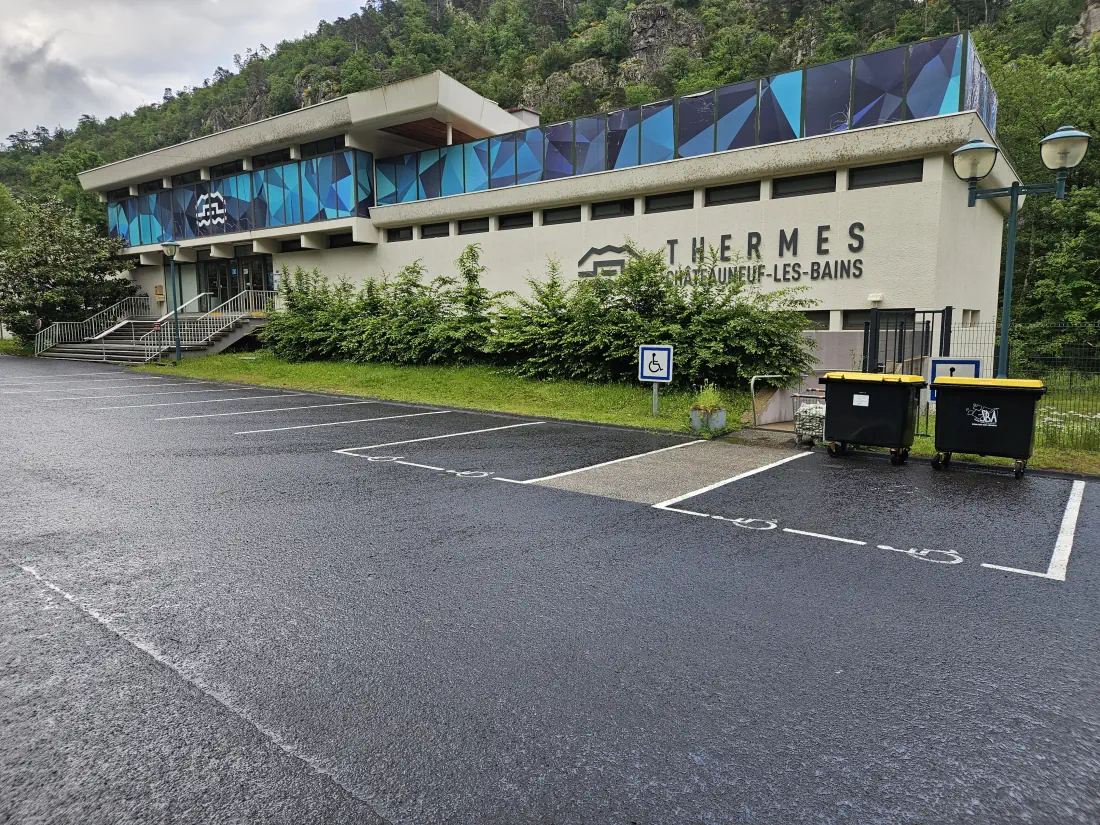
When I arrived at the modestly sized Châteauneuf-les-Bains thermal baths, I realised there wasn’t much around. The area was peaceful, with the spa establishment located between the D109 road and the Sioule River.
🅿️ You can leave your car in the car park and walk to Spa park, where you can enjoy the baths for free.
Châteauneuf-les-Bains is one of only 11 spa resorts remaining in the Auvergne region, and the only one without a casino.
Nevertheless, visitors can enjoy more refined activities here, such as taking an invigorating stroll along the wooded banks of the Sioule River or fishing in some of France’s most productive waters.
The Lefort spring and its bath
A short walk along the Sioule will take you directly to the Lefort spring, which is just 250 metres from the paid spa. You can soak here for free all year round.
When I arrived at this landscaped spring with its slightly geometric lines, I felt very welcome. Dating back to 1963, this unusual spring is far removed from the hustle and bustle of everyday life. It looks solid and unchanging, so it is unlikely to be altered or destroyed in the years to come.
In the past, this spring was used as a thermal refreshment bar, and the water was bottled and sold. It has undergone a number of necessary improvements over the years.
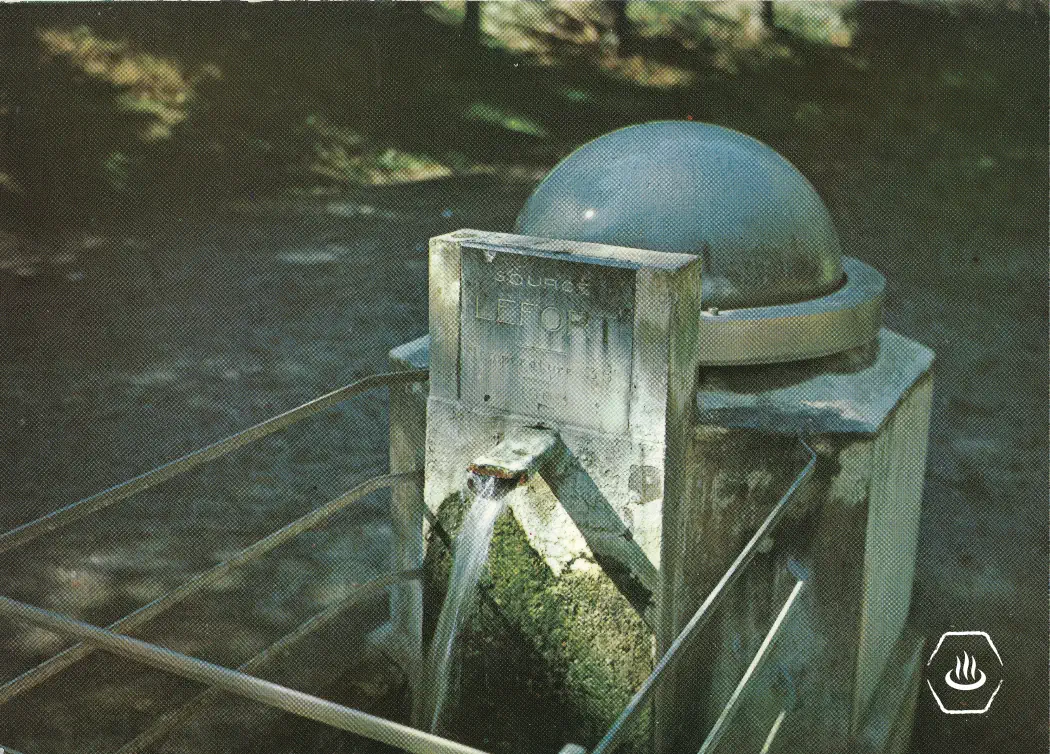
Today, the ensemble comprises a square receptacle surrounded by rectangular plates. A semicircular plate covered with a light, rust-coloured deposit completes the structure and collects the famous water first. This then flows into the Sioule River, just a few metres away.
If you press your ear against the glass bell, you can hear the thermal water bubbling inside. Thanks to its high carbon dioxide content, it produces an extraordinary sound. The effects of this carbon dioxide on skin microcirculation during a bath are also remarkable. Read our article, ‘The amazing health benefits of a hot bath’, for more information.
However, this gas can only be tolerated if it can escape freely into a well-ventilated area. In a closed space, it can quickly build up to the point where breathing becomes difficult and you feel oppressed. To find out more, read the first part of the article ‘How to cleanse your lungs your lungs with simple, natural ways‘.
It is also worth noting that the spring emits a rotten egg smell, which is beneficial for the respiratory tract.
However, the pool is so shallow that you would have to get into an awkward position to fully immerse yourself. Nevertheless, the water in the pool is renewed more quickly, helping to maintain a temperature close to that at which it emerges. This is around 30°C (and 32°C at the source). The water temperature is therefore natural.
When it was first tapped in 1889, its flow rate was almost three times higher than it is today. However, its flow rate decreased over the following years due to the construction of new thermal water catchments nearby.
The Lefort spring was recaptured in 1962–1963. Although its flow rate increased slightly, the installation of two boreholes (intended to supply the thermal baths) a few dozen metres from the spa centre in the 2000s reduced it once again.
In 1987, significant pumping from the source du Bain Tempéré (Temperate Bath spring), which is located within the spa establishment, also led to a significant drop in the flow rate of the Lefort spring (ref. BRGM, the French National Geological and Mining Survey).
These neighbouring springs are connected by griffons. Although they all originate from the same hot water deposit, they have four different names and four conduits. However, the Lefort spring is unique because its water rises naturally to the surface.
The therapeutic virtues of the Lefort spring
Owing its name to an eminent 19th-century doctor, the Lefort spring is renowned for its many health benefits. It is an effective treatment for chronic degenerative rheumatism, skin conditions, respiratory problems, allergies, and high blood pressure.
It is a carbo-gaseous, sodium bicarbonate, lithinated, potassic, ferruginous water with the presence of sulphur. Lithinated beverages were renowned for their effectiveness in treating gout. The most notable lithinated waters in Auvergne are found in Royat, Sainte-Marguerite and Châteauneuf.
A man-made pool:
This type of capture, combined with the presence of an unnatural substrate at the bottom of the pool, can alter the living conditions of the microorganisms that develop there. This undoubtedly has a slight impact on the water’s therapeutic properties.
To find out more, read our article ‘ The soil, base layer and living medium of a hot spring ’.
The Grand Saladis spring in Les Martres de Veyre
At first glance, this spring resembles a pond — an irregularly shaped basin with no defined capacity. However, it is actually a natural pool that collects a large volume of thermal water which remains at a constant level. The water temperature is around 22°C.
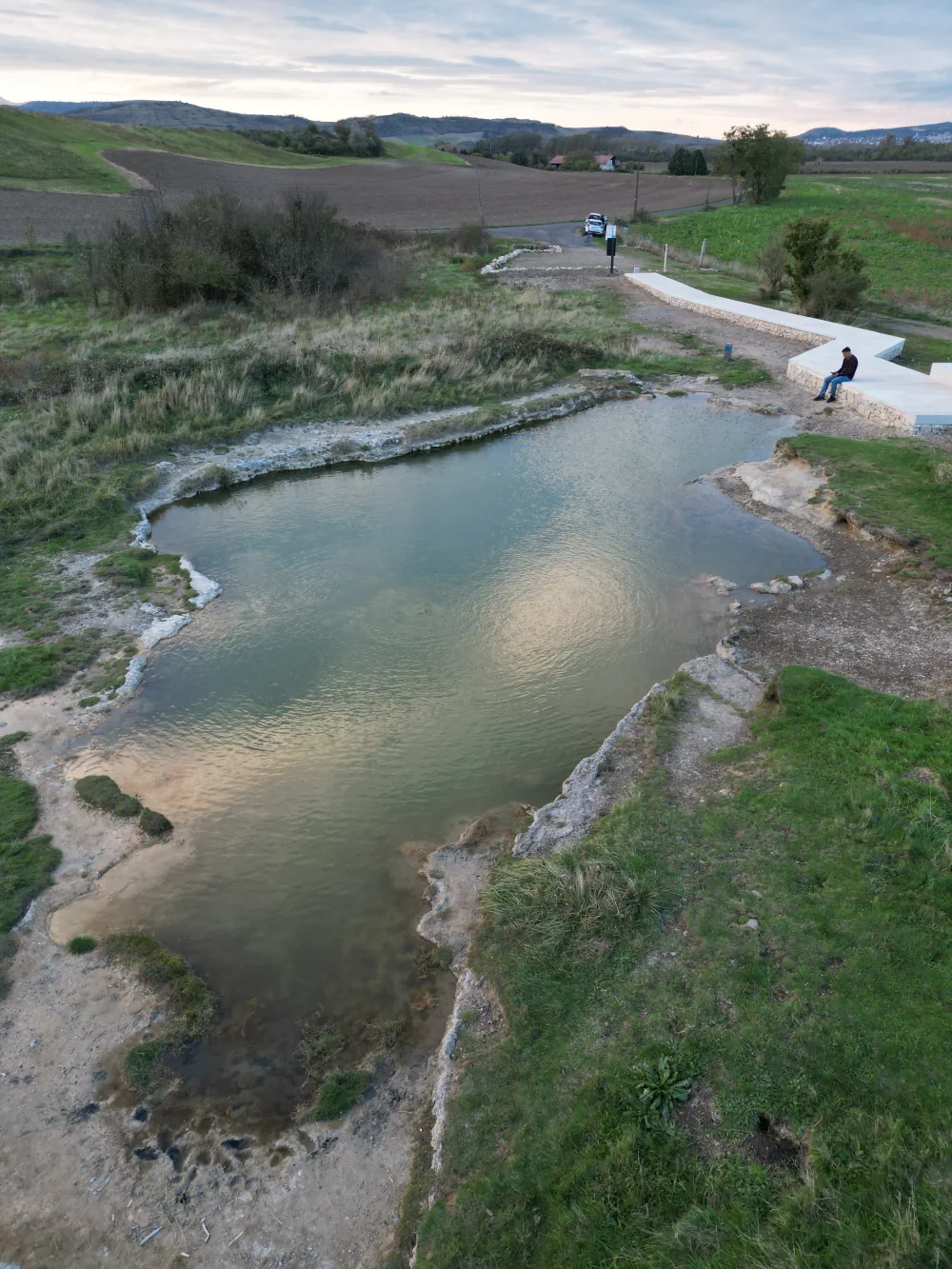

The site has recently been landscaped, so you will need to follow the stone path to reach it.
The Saladis springs are located within a Natura 2000 protected area. The grass around the pool is left uncut to allow halophilous plants, which thrive in salty conditions, to flourish. Soaking is not allowed.
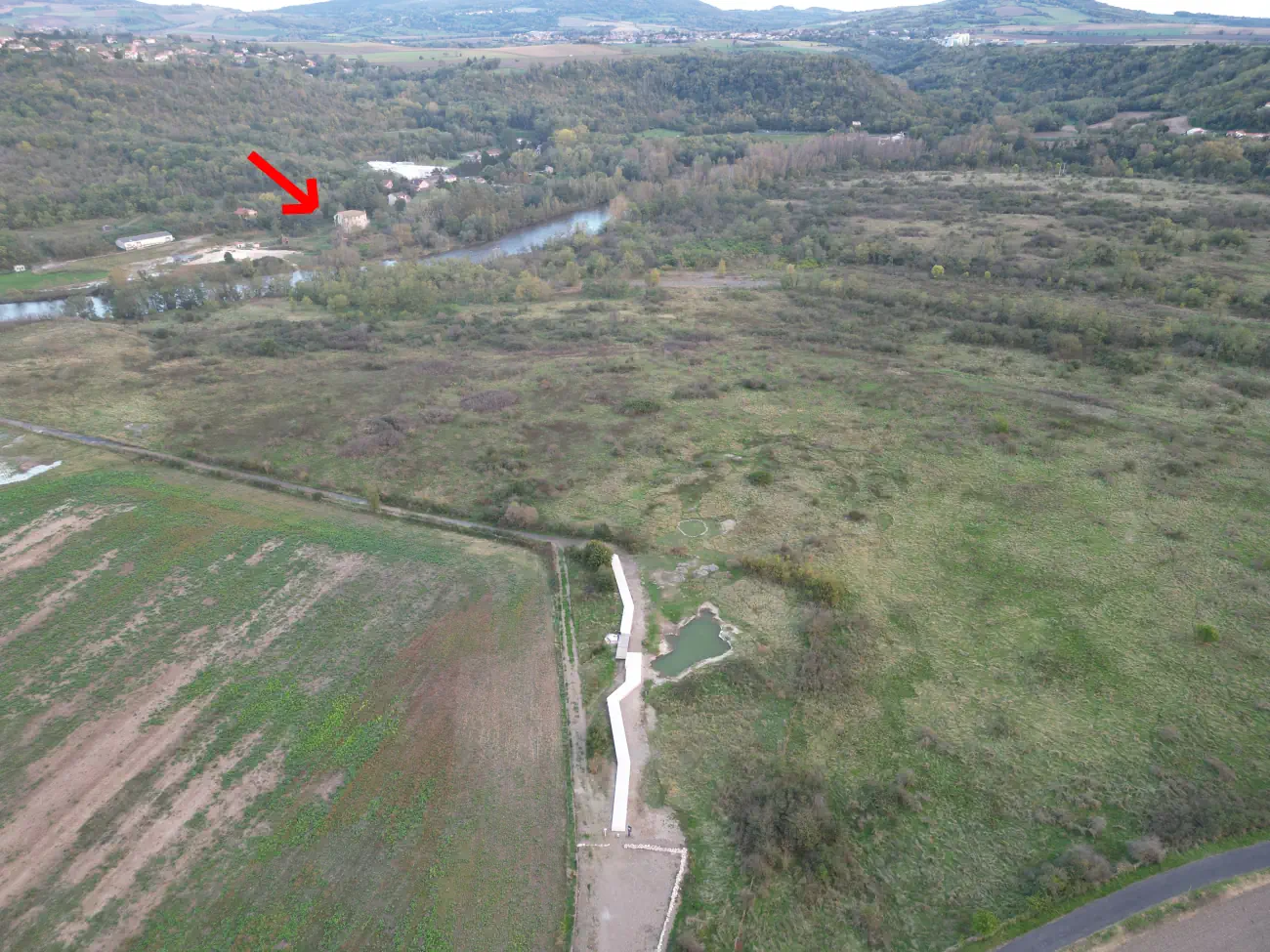
As for the waters, the locals like to share stories about how they have healed them and alleviated eczema and other skin conditions.
You can still enjoy these waters by accessing the Petit Saladis spring, which is located just a few metres from the pool. This channelled resurgence has given rise to a fountain.
To find out more about the Saladis springs, please read our article on the Saladis springs. You can also read our article on the Sources Sainte-Marguerite springs, a former spa resort.
The Croizat spring in Le Mont-Dore
The road from Clermont-Ferrand to Le Mont-Dore is said to be one of the most beautiful in the Auvergne region. It is more interesting, with plenty of trees, and well worth the detour.
Le Mont-Dore is one of the most beautiful places in the region. It is sure to delight nature lovers. This spa town is famous for its abundance of thermal springs. Thirteen springs have been identified, eight of which are used by the thermal baths in Le Mont-Dore.
A pretty valley offers a lovely walk, part of which follows the ‘Sentier des Sources’ (springs path) trail, located three kilometres from the centre of Le Mont-Dore.
A magnificent riverside path leads to the Croizat spring, which was once used by the La Bourboule thermal baths and is still owned by the commune. The thermal baths are located three kilometres from the spring and already have a number of thermal springs supplying the resort’s establishments.
However, it has been illegal to take a dip here since 2016, and visitors risk a fine if they do so. Nevertheless, the natural hot spring, which has a temperature of around 38°C, continues to attract visitors keen to experience its benefits. You can read more about it in the article ‘The Croizat hot spring in Mont-Dore, Auvergne‘.
The Chaudes-Aigues thermal springs
The pretty town of Chaudes-Aigues lies on the banks of the Remontalou stream in the Cantal department and is surrounded by mountains. There are many beautiful walks in the surrounding area. However, it is the hot springs, above all, that have helped to make the area so attractive.
A little bit of the history
Around 450 AD, Appoline Sidonaire, the former bishop of Auvergne, evoked the reputation of the waters that gushed forth in the heart of this medieval town.
Given its location on a transit route, we can therefore imagine that this site was generally favourable for well-being, trade and commerce, as well as invasions in times of conflict.
Writers from that period describe the difficulties experienced by this region during the barbarian invasions. The public thermal baths were destroyed, leaving only the springs. The term ‘barbarian’ was used to describe the armed groups that invaded the Roman Empire between the 3rd and 6th centuries AD, such as the Goths, Vandals, Burgundians and Franks. Led by the Huns, these groups overthrew the Western emperors and devastated everything in their path. This included the buildings and facilities of the thermal baths.
In the 16th century, during the reign of Henri IV, the town of Chaudes-Aigues and its thermal baths, formerly surrounded by ramparts, were sacked and set on fire by Protestant rebels.
Despite experiencing both dark and prosperous periods, the springs continued to make their way patiently towards the light, even when no one was there to show them gratitude or have faith in them. Today, many of the springs originate in houses that are closed off on all sides. In fact, around ten of the resort’s 32 springs reportedly belong to private individuals, particularly those living next to the Par spring.
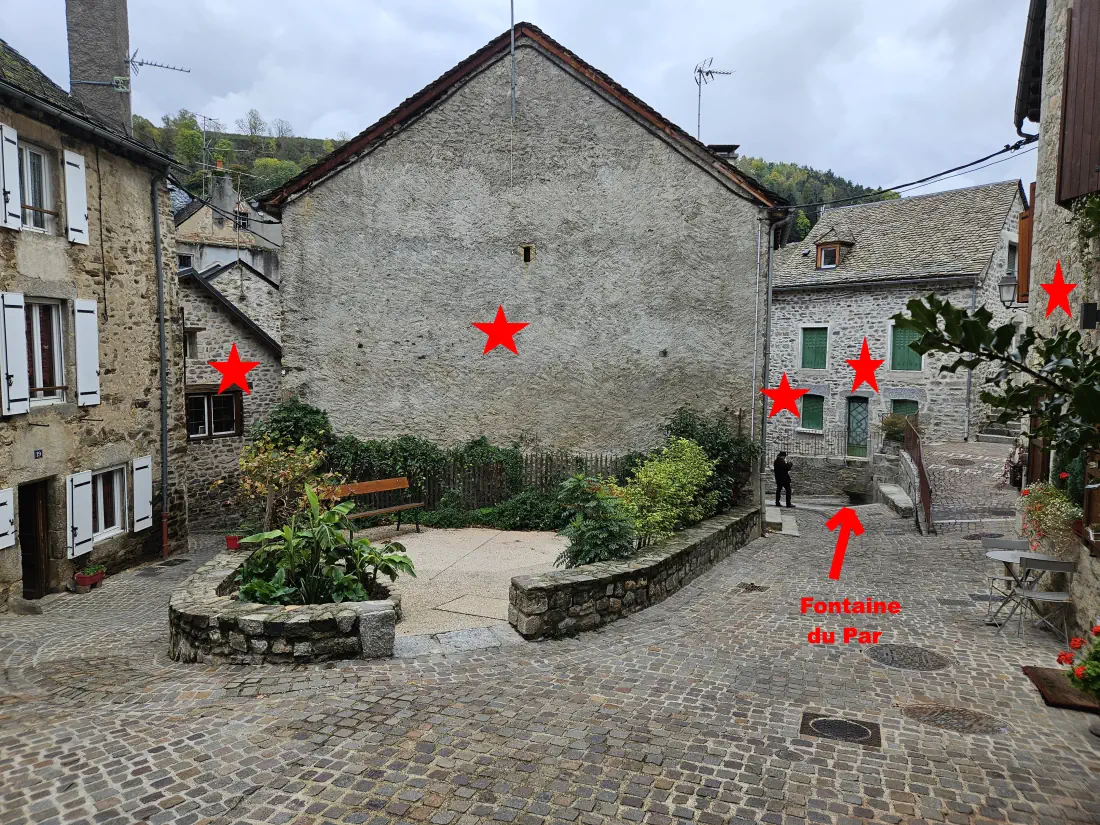
These houses are all spa establishments, with extremely diverse aspects.
The springs can be used in various ways, such as providing hot water for domestic use, heating, or filling an existing pool. However, the latter is difficult to envisage given that buildings housing thermal facilities are always at risk of damp and require extensive maintenance.
The Par spring, France's hottest spring
Chaudes-Aigues boasts 32 thermal springs. These are of the sodium bicarbonate and carbogas types. The temperature of the springs ranges from 40 to 82°C.
The most important is the Par spring, which has the highest temperature. It is located in the upper part of the town. In the past, it mainly supplied heating to a large number of residents. It is also the spring that releases the largest volume of water.
The water from the Par spring naturally rises to the surface, where it collects in a stone basin at the foot of a building. As the water flows down, it leaves a slight ochre stain. I measured its temperature as around 80.6°C.
♨️ Thermal waters sometimes erupt from the seabed or sub-polar ice at temperatures exceeding 100°C.
As the water flows down from the Par spring, any that does not reach the houses is collected in a tank and distributed via canals to other houses requiring heating. The spring also supplies several of the town’s fountains, including the Par fountain, which is the most popular with tourists. This fountain receives around one-fifth of the total flow from the Par spring, at a rate of 300 litres per minute.
However, since 2010, the Par spring has had to meet the hot water requirements of the new spa establishment and thermoludic centre. Consequently, it can no longer be used to heat a large number of homes. Now, only a small amount is used to heat the church.
When examined in a glass, the water from this spring appears perfectly clear. It is slightly salty and bland, with no unpleasant aftertaste. It has no distinct odour.
Nevertheless, the thermal vapours present at the site benefit the respiratory tract. This is due to their high bicarbonate ion content and the variety of chemical elements they contain, which interact with each other.
💡Difference between a fountain and a spring:
Over time, a spring can evolve into a fountain. Pipes are installed and gutters are added to drain the water, creating a fountain or washhouse.
🗺️ You can also find the following on the map:
- the hot spring in the Geothermia cave, which has a recorded temperature of 33 degrees;
- the Place du Marché fountain (temperature: 66°C), which is fed by the Par spring;
- the fountain in Place au Beurre (temperature 64°C), fed by the Par spring;
- a fountain in the Moulin thermal park (temperature recorded at 50°C), fed by the Par spring;
- the public washhouse (temperature recorded at 37°C) is fed by the Lestande 2 hot spring.
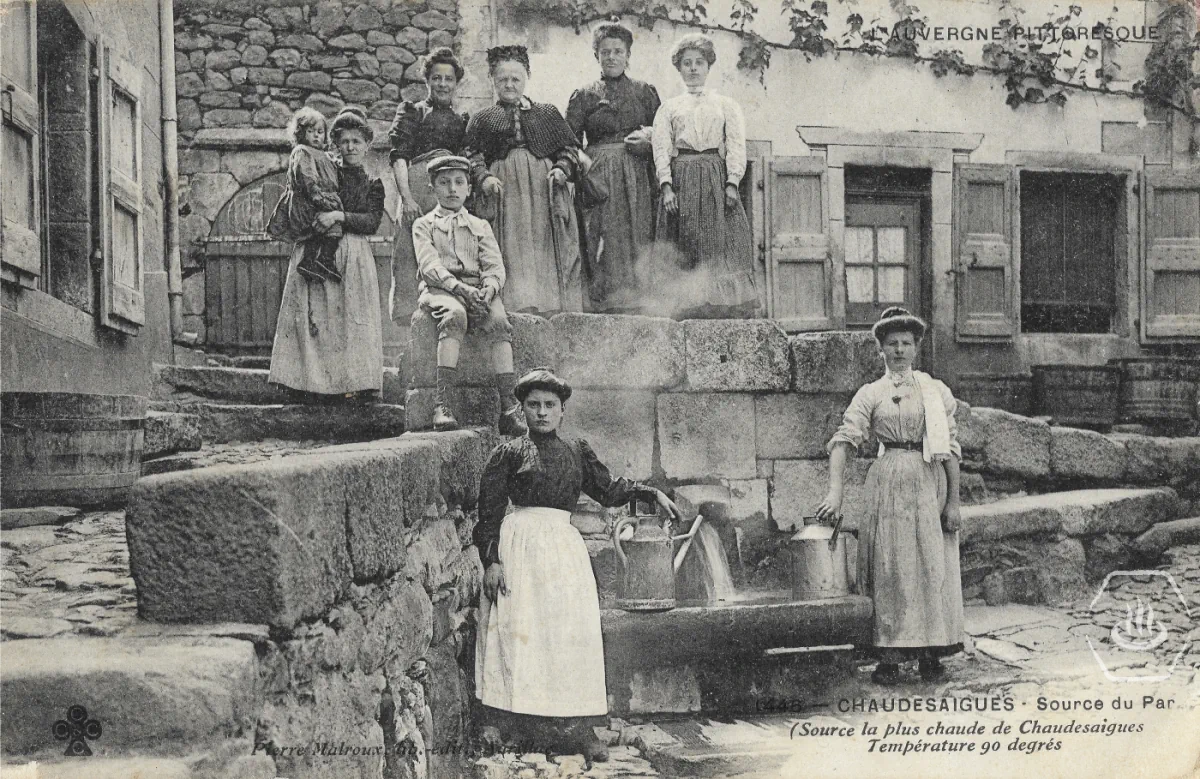
The springs of Saint-Nectaire
At least forty springs have been identified along a two-kilometre stretch of the Saint-Nectaire area, not to mention the many other mineral water trickles.
Most of the springs are warm and some are hot; all of them have been exploited. These springs have the highest mineral content of all the hot springs in Auvergne and were therefore used for thermalism in Saint-Nectaire right away.
The following is a scale of mineralisation for the main springs used in various spa towns in the Auvergne region:
-
Saint-Nectaire 7.51 g/l
-
La Bourboule 6.66 g/l
The commune of La Bourboule owns the Croizat spring, which has a total mineralisation of 7 g/l (potentially reaching 9 g/l).
-
Châteauneuf-les-Bains 4.51 g/l
-
Mont-Dore 1.08 g/l
-
Chaudes-Aigues 0.811 g/l
Although the Saint-Nectaire spa resort is no longer active, many of its springs are still used in the petrification industry. Two converted caves offer visitors the chance to discover a hidden aspect of nature and a field of exploration linked to the petrification of objects all year round. Each cave contains petrifying springs.
Les Grottes du Cornadore (Cornadore caves) offer visitors a subterranean setting where the warm, highly mineralised water drips from the ceiling and collects in the gours. The Romans frequented these waters and used them (there were ancient Roman thermal baths here) until they lost control of Gaul.
Les Fontaines Pétrifiantes (Petrifying Fountains) boast an underground setting where mineral water brings a whole other world to life. The sound of water dripping into a pool, the hot, bubbling water and the stone landscapes are enough to send shivers down your spine.
As well as being a feast for the eyes, the visit offers the chance to find out more about the art of petrification through films, exhibitions and workshops.
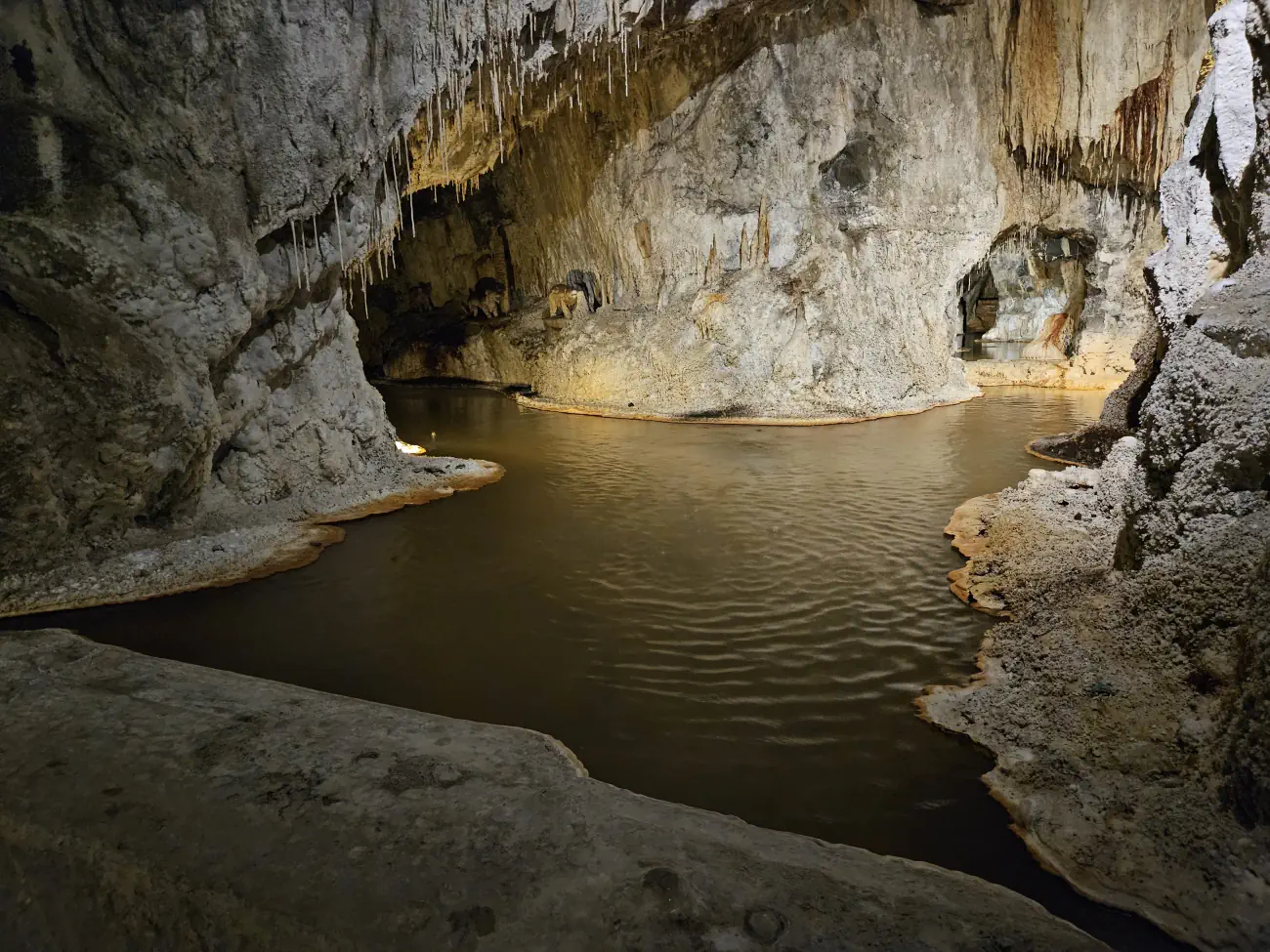
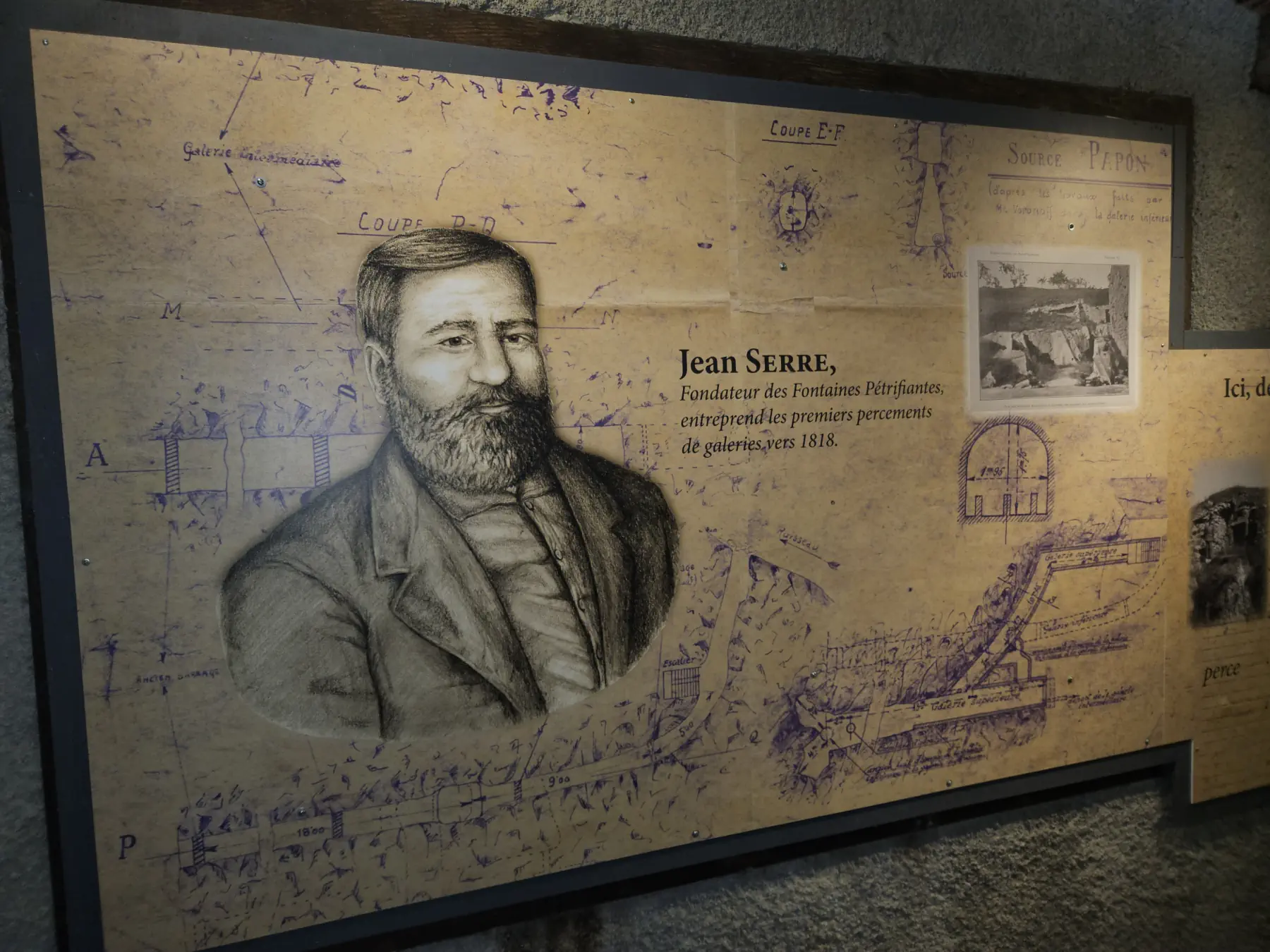
If you would like to find out more about Saint-Nectaire and its caves and springs, read our article, ‘Visit Saint-Nectaire in Auvergne: The Springs and Caves‘.
Source de la Tête de Lion in Saint-Floret
Saint-Floret is home to several cold thermal springs that were once renowned.
One of the springs was said to cure children’s stomach problems, hence its name: the ‘Source du Ventre‘ (Belly spring). It is located in the village, but unfortunately it is no longer accessible to the public.
However, the valley also boasts another accessible spring known as the ‘Tête du Lion‘ (Lion’s Head) or ‘Ribeyre’ spring. Located around two kilometres from the village in the direction of Saurier, this geological curiosity features a monstrous figure. It is the source of the largest travertines in the Auvergne region.
The spring is rich in iron, carbonates and carbon dioxide, which explains the significant carbonate deposits present. Scientists call these deposits ‘travertines’. These limestone deposits are sometimes red in colour due to the iron in the water.
A path starting at Ribeyre Bridge, which crosses the Couze Pavin, leads to a viewpoint after a ten-minute walk. There, you can see the enormous limestone formation known as the Lion’s Head Spring.
You can admire a formation that resembles a monster’s face. Its shape and colour are reminiscent of a lion’s head. Its lovely brownish-white colour contrasts with the surrounding wilderness. From the front, you can see an impressive stalagmitic formation leaning against the hillside.
If you’re interested in seeing another ‘monster’s face’ like this one, check out our article on the petrifying fountain of Réotier. The spring that feeds the fountain is home to the most spectacular travertines in the Provence-Alpes-Côte d’Azur region.
You can then follow the path to the left to reach the source of the petrifying fountain.
If you put your ear to the ground, you can hear the gurgling sound of water bubbling out of the spring.
According to my thermometer, the temperature was 14.6°C at the source and 15°C at a small resurgence approximately halfway along the trail (see the photo on the map).
In the past, the spring was already renowned for its therapeutic properties, and people from the surrounding area would come here to collect water. Towards the end of the 19th century, the water was bottled. However, the spring’s low flow rate of three litres per minute, coupled with its remote location, meant that it could not be used in the long term.
As at the Saladis Springs site, halophilic plants that thrive in salty environments can flourish freely in the wild here.


